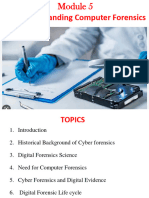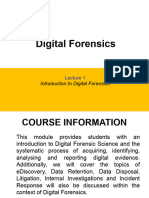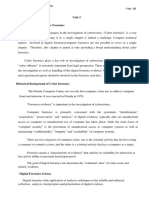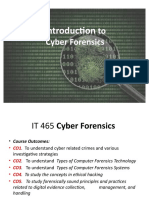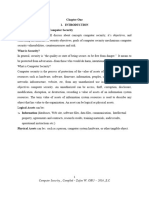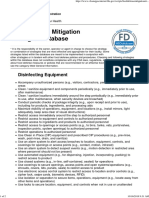0% found this document useful (0 votes)
33 views47 pagesUnit 5 Understanding Computer Forensics
The document provides an overview of computer forensics, detailing its definition, historical background, and the need for digital evidence in law enforcement. It outlines the digital forensic life cycle, including evidence identification, collection, analysis, and reporting, emphasizing the importance of maintaining a chain of custody. Additionally, it discusses the challenges faced in digital forensics and the role of network forensics in analyzing wireless communications.
Uploaded by
jarvis01718Copyright
© © All Rights Reserved
We take content rights seriously. If you suspect this is your content, claim it here.
Available Formats
Download as PDF, TXT or read online on Scribd
0% found this document useful (0 votes)
33 views47 pagesUnit 5 Understanding Computer Forensics
The document provides an overview of computer forensics, detailing its definition, historical background, and the need for digital evidence in law enforcement. It outlines the digital forensic life cycle, including evidence identification, collection, analysis, and reporting, emphasizing the importance of maintaining a chain of custody. Additionally, it discusses the challenges faced in digital forensics and the role of network forensics in analyzing wireless communications.
Uploaded by
jarvis01718Copyright
© © All Rights Reserved
We take content rights seriously. If you suspect this is your content, claim it here.
Available Formats
Download as PDF, TXT or read online on Scribd
/ 47


















